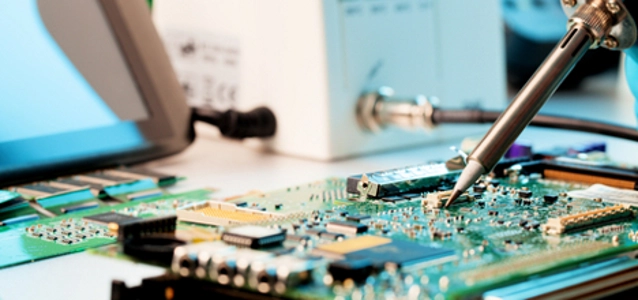
© luchschen dreamstime.com
Analysis |
Xiaomi’s attack leads TV market deployment
According to a survey co-conducted by WitsView, the display research division of the global intelligence provider TrendForce, and AVANTI, the consumer behavior research company in China, the Chinese consumers’ willingness for TV replacement is shown in the data below:
1. About 80% of households place the TV set in the main living room, and among these, LCD TV account for 51.5%, PDP 22.8%, conventional CRT 17.1%, and those who don’t know the TV spec. hold 10.2%. It suggests near 50% of TVs are potentially being replaced.
2. The 40-43 inch LCD TVs are the first choices for consumers to purchase within the next six months, controlling a 25.4% share, followed by 16.2% for the 46-48 inch, and the 31-35 inch hold around 15% as the third.
3. The top three factors to influence the TV purchase are screen resolution (28.4%), brands (17.7%), and functions (14.8%).
4. TV functions to be considered are ranked as: 1. High resolution;2. Internet connection; 3. Large-sized screen. The secondary functions are USB media display support, 3D, operation systems (ex: Android), HDMI, and others.
5. For the budget, 16.4% of consumers are willing to pay RMB 5000-6999, 19.5% for RMB 4000-4999, which is the highest percentage, 18% for RMB 3000-3999, and 12.6% for RMB 2500-2999. When analyzing the budget RMB 2500-2999, 14.7% of the low income (RMB 3000 and under) are willing to purchase the LCD TV at the budget range, a No.3 proportion in the low-income category, and 61.1% are willing to purchase TVs priced higher than the budget.
Among the mid income (RMB 3001-6000), 7.2% are willing to buy at the budget range, and 84.3% are willing to purchase TVs priced higher than the budget. Among the high income (RMB 6001 and above), 1.3% are willing to buy a LCD TV at the budget, and 94.6% are willing to buy TVs priced higher than the budget. The data indicates the LCD TVs at this price range are more appealing to the low-income group and some mid-income consumers.
Xiaomi, dubbed as Chinese Apple, recently launches the first 47-inch 3D LCD TV with internet connection function, targeting young consumers, at a selling price of RMB 2999 which meets consumers’ dispensable budget for a TV. Xiaomi’s 47” display, 1920x1080 resolution, 3D feature, and internet connection are all marketing focuses that satisfy the selected crucial requirement to consumer purchase from the survey. It reflects that the Xiaomi TV hardware marketing strategies are extremely clear from 4P inside to 4C at the consumer side, highly conforming Chinese consumers’ preferences.
WitsView concludes several points of view regarding to Xiaomi TV’s strategy and outlook:
1. Internet pool survey close to consumers: Xiaomi has always relied on internet for communication and finally realizes consumers’ demands into a product that is truly desired by its target market.
2. To sell services but not hardware: As the market is attracted by Xiaomi’s affordable prices, the company doesn’t emphasize on the hardware revenue but on selling services, software, advertisement, accessories, publicity (brand image), and even sell a future structure and a chance to smart internet. Xiaomi founder Lei Jun says Xiaomi company is not a “product company”.
3. To build a system integration of smart multiple displays: As Samsung actively deploys its series of smart products, Xiaomi starts to sell the LCD TV, a hardware device that can only function as a display in the future, and a smart family integration system beginning from a TV will be a development trend. Xiaomi will rely on its advantages on software system integration to begin a wave of smart TVs, and the smart phone will become a crucial control connection of the smart family combination.
4. To create China’s Apple: there are nearly one million Xiaomi fans in China thanks to its business strategy staying close to consumers, while the founder Lei Jun is outspoken to say that it is needed to build a “quasi-religious” atmosphere and make the name “Xiaomi Religion” heard. But what make Xiaomi different from Apple are its more affordable selling price and spec, and the TV follows the same strategy as the smart phone, including characteristics fashionable, friendly, and low-priced. The high C/P value products not only stir new topics, but attract tremendous Xiaomi fans. Another marketing campaign is Xiaomi depends on quality but not quantity to hit the headline, allowing a highly anticipated showcase for the debuting Xiaomi TV.
5. Advantage of vast market in China: With China’s 1.3 billion populations approximately equaling to 250 million households, the business opportunities for smart family are remarkable. A survey by AVANTI indicates 74.5% of Chinese families possess Chinese-branded TVs. The nation enjoys not only the cost advantages as the “World Factory”, but has its vast domestic market as the niche for Xiaomi products.
6. Cross-industry alliance helps unlimited global business: Xiaomi works with three major telecom companies in China, lifting Xiaomi’s smart phone market share, and Xiaomi TV will follow the same business model. Different from other brands, Xiaomi seeks cooperation with diverse international makers to boost its brand awareness in the international market. The Xiaomi LCD TV is outsourced to Wistron with LGD’s 47” IPS panel and will be using SDC’s 48” panel. Meanwhile, Xiaomi smart phones are also assembled by Hon-Hai. However, there is a long way to go to become a first-tier international brand and making good use of others’ strengths and starting cross-industry alliance are ways to success.
Xiaomi TV not only represents internet TV developments but triggers the fierce competition in advance between two camps, IT brands and CE brands. People who can control the soft power of integrating multi-displays and offer diverse contents will lead the market mainstream. With TVs touting various internet information platforms and high-resolution images, the developments in the industry of key components that improve image processing are also stimulated, including the upgrade for CPU, graphic card processor, and data-storage DRAM and Nand Flash.
With the internet platform it has been cultivating for years, Xiaomi comes out with products, prices, and users’ interface close to consumers needs, and avoids the unnecessary decision-making and cost waste. It makes good use of space in exchange of time, the efficient cross-industry cooperation, and new business and marketing models to make Xiaomi not only China’s Apple but a globally known “Green Apple” that advances to the international market.
